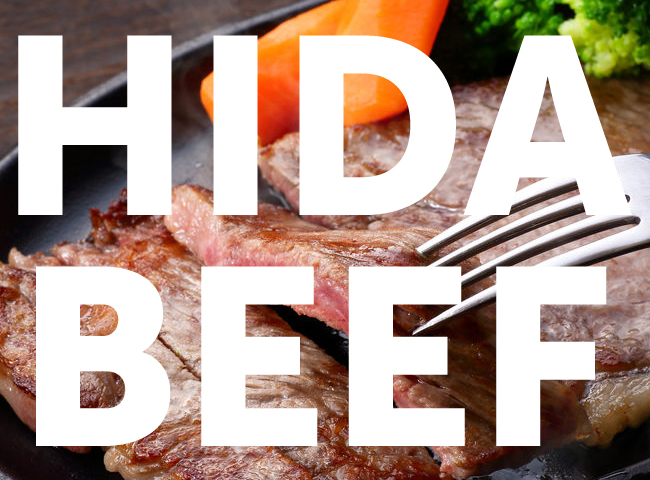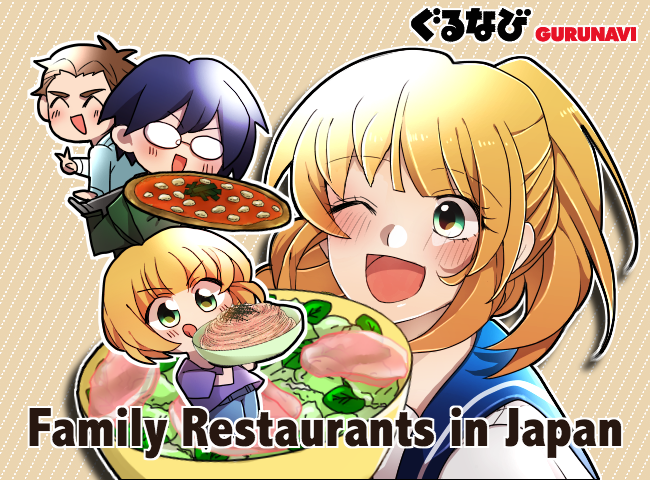Meibutsu Are the Prized Dishes of Japanese Regional Cuisines
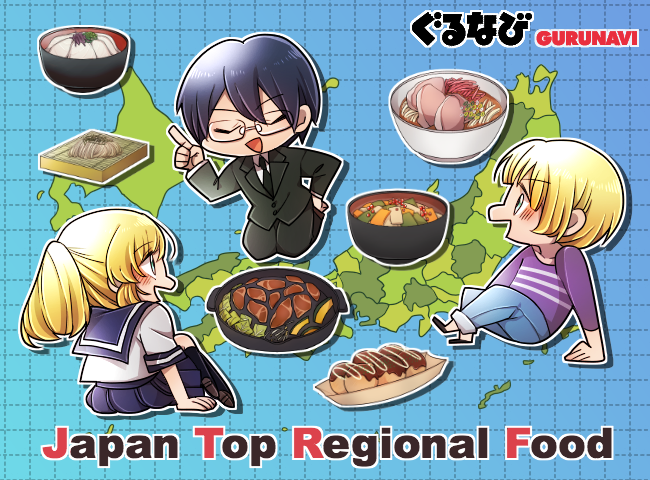
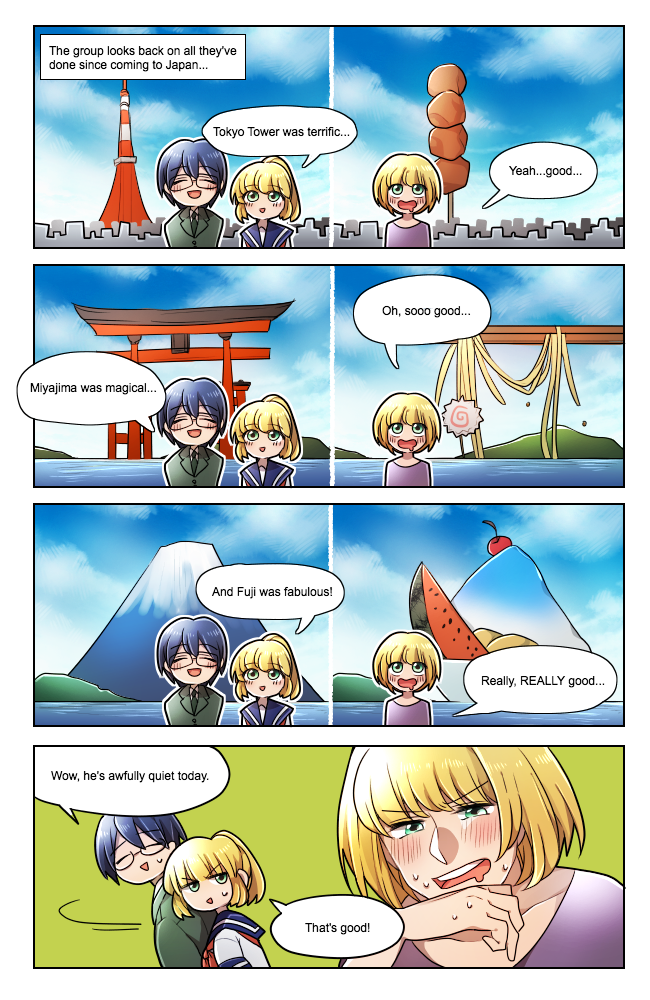
Japan is home to eight major regions with forty-seven prefectures, stretching from Hokkaido in the north to the Okinawa islands in the southwest, each with their own unique sights, traditions, and specialties. The range of geography and climates across the country give each region in Japan its own unique agriculture, which has contributed to the emergence of meibutsu, or famous Japanese local foods—dishes particular to a region.
When traveling in Japan, it’s not uncommon to try famous local foods packed in an ekiben (train station bento lunchbox) or to bring home a meibutsu from that region as an omiyage (souvenir) for friends, family, and coworkers. These products are a great source of local pride, and with many young people moving away from small towns to bigger cities like Tokyo and Osaka for work, meibutsu are a great reminder of the taste of home.
From Hokkaido in the North to Okinawa in the South, Discover the Best of Japanese Local Food
Hokkaido Food

Hokkaido, a region and prefecture unto itself due to its vast size, is located in the far north of Japan. Snowy in the winter and pleasantly mild in the summer, this spacious prefecture is the source of some of Japan’s best agricultural products and seafood. One of Hokkaido’s most famous meibutsu is kaisen-don or seafood donburi. It’s made of steaming hot rice topped with the freshest seafood imaginable, from glistening ikura (salmon roe) to sweet scallops and premium uni (sea urchin). In addition to its highly prized seafood, Hokkaido is uniquely famous for its mutton-based meibutsu called “jingisukan” (Genghis Khan barbecue), which consists of grilled lamb and vegetables.
Find out more about Hokkaido Regional CuisineTohoku Food
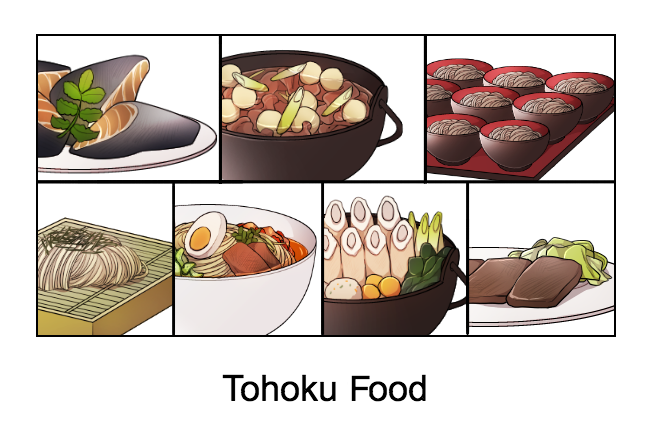
Japan’s northeastern region of Tohoku is home to six prefectures with all sorts of tasty things to eat. One of Tohoku’s most famous food items is wanko soba from Iwate prefecture, an all-you-can-eat meal featuring teacup-sized bowls of soba (buckwheat noodles). The goal is to see how many bowls you can slurp down, and then to cover your bowl with a lid as quickly as possible once you’re full, before your enthusiastic server can give you another helping. Another one of Tohoku’s meibutsu food items is gyutan (ox tongue) from Sendai. Gyutan has a distinct meaty flavor and tastes great when grilled and eaten simply.
Find out more about Tohoku Regional CuisineChubu Food
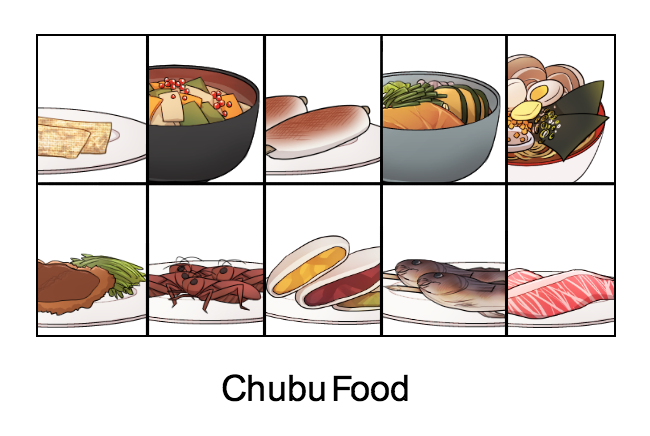
The Chubu region is made up of nine prefectures centrally located on Japan’s main island of Honshu. The Japanese Alps running through the heart of this region have greatly influenced the type of foods that the area is known for. One perfect example is oyaki, roasted dumplings from Nagano made with fermented dough and vegetables. The dough uses buckwheat flour rather than rice or other grains because the steep, mountainous geography of the alps make it difficult to grow rice there. The vegetables used in oyaki are a mix of local ingredients such as mushrooms and seasonal mountain vegetables. Another dish that makes use of mountain vegetables is noppe from Niigata, a filling vegetable stew eaten at New Year celebrations and other festivals.
Find out more about Chubu Regional CuisineKanto Food

Kanto, the eastern region of Japan, includes the nation’s capital—Tokyo—and six other prefectures, each with their own famous regional Japanese cuisines. One of the meibutsu items from this region is kaigun curry, which originated in Yokosuka city in Kanagawa prefecture. It’s a stew-like dish that was popular among sailors in the former Japanese imperial navy and is still eaten in Yokosuka today. Another meibutsu of the Kanto region is yaki manju from Gunma, a roasted steamed bun filled with red bean paste. Yaki manju is a popular omiyage to bring home from a trip to one of Gunma’s famous hot spring resorts. And in the metropolitan capital of Tokyo, you can find monjayaki, Kanto’s answer to the Kansai dish okonomiyaki. It’s made by frying together ingredients and batter on an open griddle and eating it with tiny bite-sized spatulas.
Find out more about Kanto Regional CuisineKansai Food
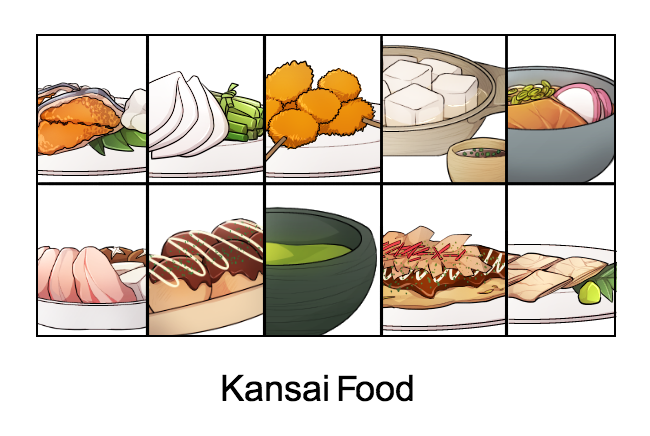
Not to be outdone by the Kanto region, is Kansai, or western region. This area is home to both Osaka, one of Japan’s largest cities, and Kyoto, one of Japan’s most traditional. Kansai people are true gourmets and have a love for food that’s said to be unrivalled by any other place in Japan. The meibutsu of Kansai include addictive street food from Osaka, such as takoyaki (deep fried octopus balls) and okonomiyaki (a savory fried pancake), as well as traditional foods from Kyoto that are centuries old. This includes tofu dishes like yudofu (simmered tofu) and other soy-based dishes such as yuba. The city of Uji, near Kyoto, is also the source of Japan’s finest premium matcha green tea.
Find out more about Kansai Regional CuisineChugoku Food
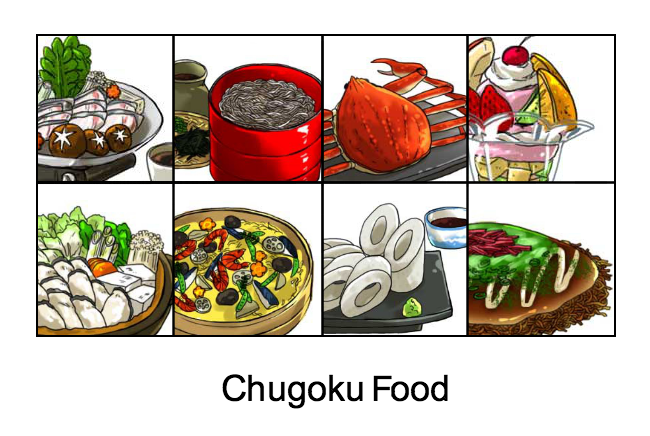
The Chugoku region is home to five prefectures known for their excellent seafood, due to their location between the Sea of Japan and the Seto Inland Sea. Tottori prefecture on the Sea of Japan side is famous for its sand dunes as well as its excellent snow crab, or matsuba gani, while Yamaguchi prefecture is the best place to try death-defying fugu, or pufferfish. Hiroshima is another area known for seafood, particularly its oysters. One famous dish from Hiroshima is kaki no dotenabe, or oyster hot pot with miso soybean paste. If seafood isn’t your thing, the region has plenty of other delicious meibutsu to offer, such as succulent fruit parfaits from Okayama, Japan’s sunniest prefecture.
Find out more about Chugoku Regional CuisineShikoku Food

Shikoku is a small mountainous island made up of four prefectures that have developed their own very distinct cultures. Probably the most well-known food item of this region is Sanuki udon from Kagawa prefecture, one of the “three famous udon noodles” of Japan. Also famous is a dish from Kochi prefecture called “katsuo no tataki”. It’s a lightly seared katsuo (skipjack tuna) fish fillet that’s thinly sliced and served with sliced leek, garlic, ginger, and ponzu dressing.
Find out more about Shikoku Regional CuisineKyushu Food

Kyushu is the southwesternmost of Japan’s four main islands and is made up of seven prefectures, plus Okinawa to the south. It’s the top producer of premium grade Japanese kurobuta black pork, which is featured in many local dishes, including tonkotsu ramen from the Hakata region made with pork bones, and tonkatsu pork cutlet from Kagoshima. Kyushu’s proximity to the rest of Asia has brought in a lot of overseas influences, reflected in famous regional dishes like champon, a Chinese-inspired noodle dish from Nagasaki, and Fukuoka’s spicy mentaiko cod roe, which came to Japan via Korea.
Find out more about Kyuushu Regional CuisineOkinawa Food
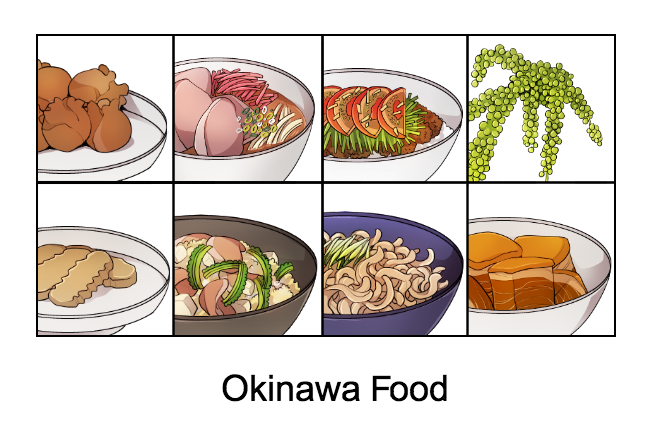
While technically part of the Kyushu region, Okinawa, located over 600 km south of Kyushu, is a group of islands with its own traditional culture and local foods. One of the most famous local products is goya, or bitter melon, the main ingredient in a stir fry dish called “goya champuru”. Umibudo, or sea grapes, are another unique food from Okinawa. The tiny grapes are actually clusters of seaweed that burst with a salty yet refreshing pop with every bite. In addition, Okinawa has a number of Tex-mex inspired foods, including taco rice, a sort of taco salad served over rice. Taco rice from Okinawa is so famous that make-at-home taco rice kits are a popular meibutsu to bring home as omiyage, and it’s served in cafés all throughout Japan.
Find out more about Okinawa Regional CuisineJapanese Regional Cuisine Spans a Diverse Array of Specialty Dishes (Meibutsu), from Wanko Soba to Oyaki Dumplings, Goya Champuru to Takoyaki
Japanese meibutsu offer the opportunity to try diverse and high-quality products from all across Japan. They’re a great way to sample the best foods that every region has to offer. Be sure to give them a try while traveling, and don’t forget to bring back some omiyage for your friends and family!



